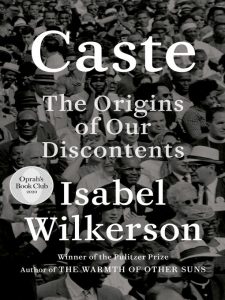Amid a pandemic, protests, and a polarizing election, we have all had to have some tough conversations with ourselves and those we love.
Pulitzer Prize-winning author Isabel Wilkerson guides us in continuing those conversations by unpacking the history of division in America. Caste: The Origins of Our Discontents explores the roots of violent opposition to difference and why it seems we are still struggling to become united.
The author untangles these complex issues by comparing the caste system in India, World War II Germany, and American racial history. A thought-provoking read sure to provide some insight and reckoning with hard truths, Caste encourages us to ask what world do we want to live in?
A Few Questions from the Reading Guide
- At the beginning of Caste, Wilkerson compares American racial hierarchy to a dormant Siberian virus. What are the strengths of this metaphor? How does this comparison help combat the pervasive myth that racism has been eradicated in America?
- Wilkerson begins the book with an image of one lone dissenter amidst a crowd of Germans giving the Nazi salute. What would it mean—and what would it take—to be this man today?
- What are some of the elements required for a caste system to succeed?
- Wilkerson uses many different metaphors to explain and help us visualize the concept of the American caste system: the bones inside a body, the beams inside a house, even the computer program in the 1999 film The Matrix. Which of these metaphors helped the concept click for you? Why was it successful?
- Caste and race are not the same thing. What is the difference between the two? How do casteism and racism support each other?



Add a comment to: Caste: The Origins of Our Discontents